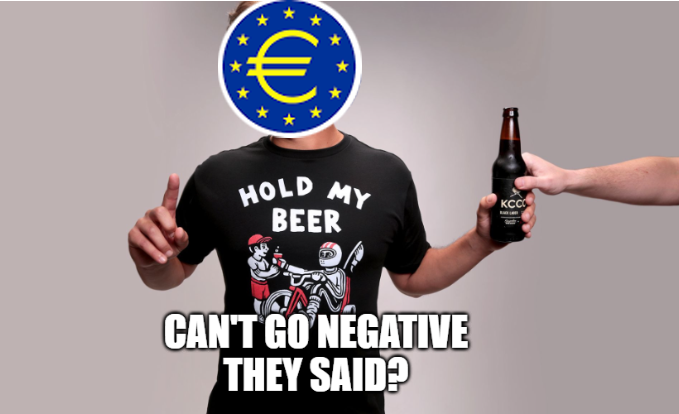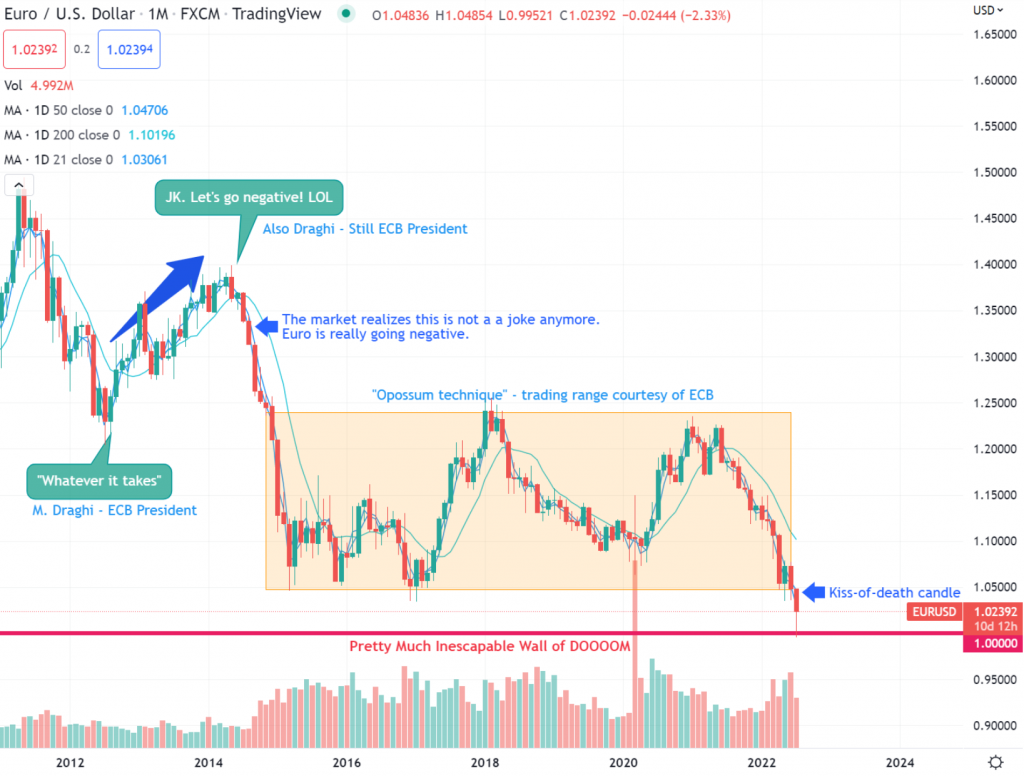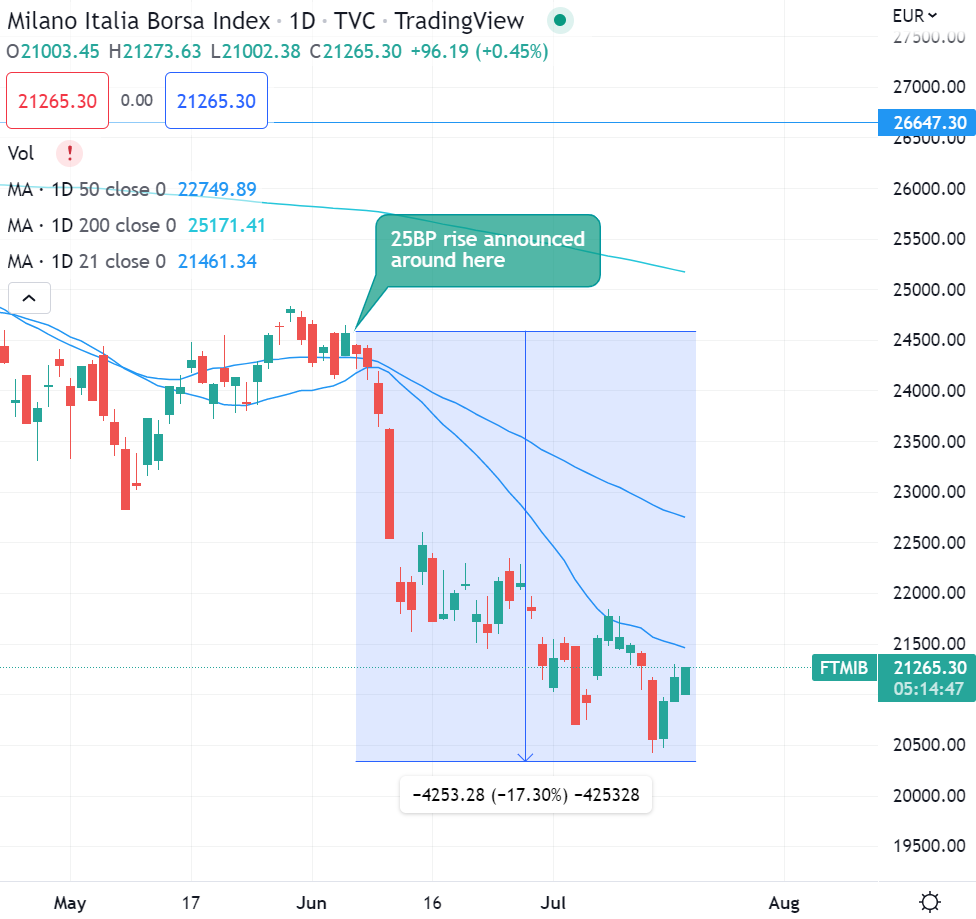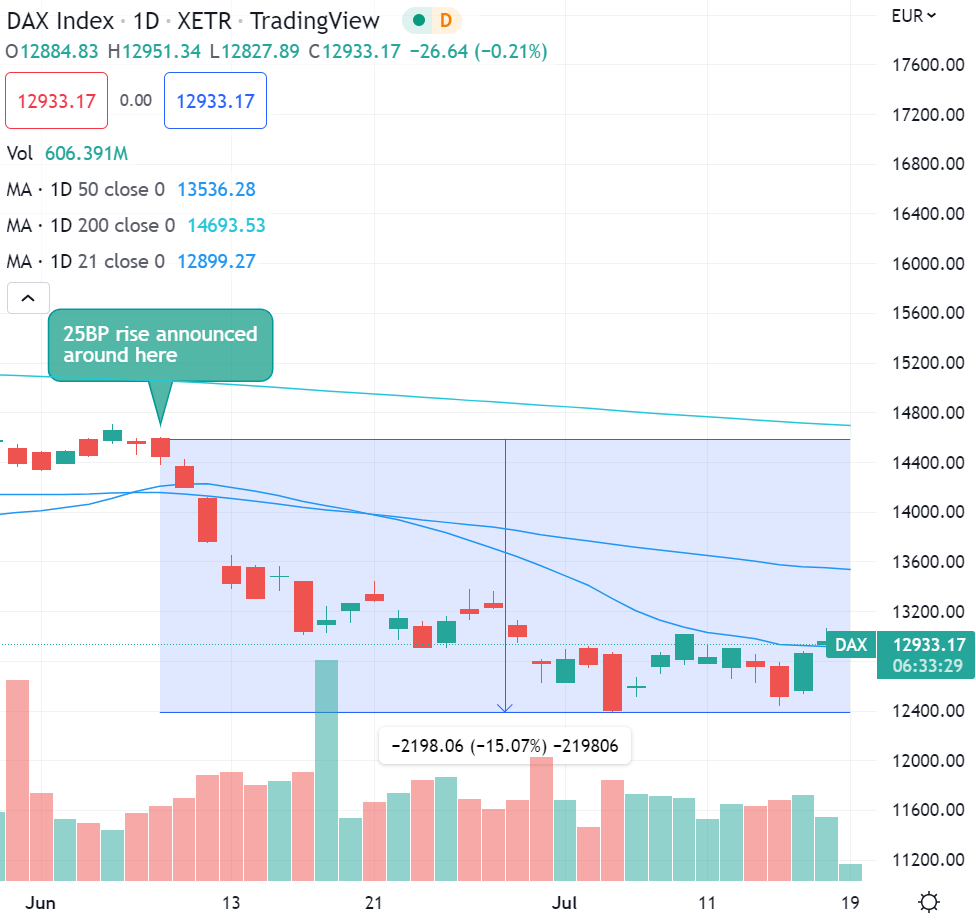Coming from part one of this series, a stark reminder of what the ECB has been doing with the unified European currency. (Spoiler alert: Relentless printing).
The negative interest rates “experiment”
Central banks do this thing of slashing interest rates when it’s time to give economy a much needed boost. The problem is, at some point you risk of hitting the wall of interest rate zero.

So the worst thing it might happen is having some sort of crisis which calls for more easy money policies, while the interest rates are already low. After all, it’s not that you can make rates go negative, right?
So when the ECB introduced the negative interest rate thing, it was defined by some as the most outlandish and daring monetary experiment of all modern monetary theory.
And today the results are in! Let’s look at the numbers:

What do we have here? Actually, a monthly view of the latest part of the century tells quite a straightforward story:
The “Whatever it takes” moment really was pivotal for the Euro, which regained its status of a reliable reserve currency, albeit for a brief moment.
But it was then followed by the start of the negative interest rates experiment. And the response is merciless, and very apparent in the charts. The Euro retreats an insane 25% against the US Dollar and that movement starts immediately, to complete in about 9 months.
It’s a brutal, unabated vertical drop. It leaves no doubts behind. The pair is left to never regain its previous stance.
Not to be the drama queen of this situation, but Europe has always been a net importer of goods. I’ll just leave you wondering the amount of damage this imbalance has done over the years.
But moving on, the Whatever it takes-level of about 1.25 then proved to be a reliable resistance, which produced very bad drops in 2018 and 2021. In both occasions, the US Dollar was artificially weakened, and that left open plenty of opportunities for the Euro to gain in relative strength, but it turns out the Euro was even weaker. I wonder why.
The resulting trading range goes on for almost 8 years, during which the floor price is an abysmal Euro is pathetic, let’s do something about it-level of 1.05, which does nothing but further consolidate the only established fact about the currency, which is that EUR should be worth more than USD as a financial axiom, for whatever reason. This has become a rooted psychological assumption.
It’s not that the ECB really did anything during those years. Yes, I’m sure the department of pencil-pushing in Frankfurt produced a lot of paper in order to legally and politically justify the do-nothing long-term stance of the ECB. Like I just said, there is always going to be a political narrative championing for more easy money policy. Cocaine addiction doesn’t go away on its own, right?
But the consequence is that the Euro was simply left there to float, kicked around by the changes in relative strength from other currencies, as their respective Central Banks did their thing by adopting different monetary policies. All while ECB did, in essence, one thing: print money.
The overall picture is that of an asset that is leaking its value away, inexorably.
I guess that is to be expected since “negative interest rates” actually means lending money at a loss.
So why did the ECB adopt this peculiar opossum coping technique?
To their merit, it’s not that they didn’t ever try to raise interest rates. At some point yey did. But that proved to be an unsustainable move, every 👏 friggin’ 👏 time 👏.
You don’t have to believe me of course, just look at recent history.
2022. Inflation is running high with no peak in sight. The FED announces a tepid 75 basis point interest rate hike in order to achieve a “soft landing”.
Not really Jerome Powell, sometime during Q1 2022
… which is to say that, in their wishlist, there is the economy cooling down a little, and that should also lower inflation according to some textbook from the ’60s. (Of course this is a pointless exercise destined to fail, but I digress).
Regardless, now, in a sane world, EU and US economies, being so intertwined, should at least try to maintain equiparable interest rates. Instead the ECB announces, after 6 months of delays and deliberations, a 25 basis points rate hike. In absolute terms, an insignificant move.
Boy the market reaction was bad. Meet Italy’s MIB index:

Germany’s DAX isn’t hot either:

All of this, as consequence of a slight variation of interest rates. Why on earth isn’t the EU capable of sustaining raising interest rates without breaking apart?
I try to lay out the whos and whys in part three of this series.


